Chord progressions tell us which chords to use when playing a song (or a section of a song). They also tell us the exact order to play the chords.
Most songs use multiple chord progressions. For example, the verse and chorus of any given song will often, but not always, be different.
Sometimes chord progressions are short and simple. Other times, they’re long and complicated.
Here’s a few ways you might see chord progressions written up:

Quite simply, read the chords one-at-a-time from left to right:

If there are multiple lines, read one line at a time, starting with the top line:

Usually, you’ll play one measure (typically 4 beats) per each chord you see written out. If you see a chord repeated multiple times in a row, play one measure for each time it’s written:
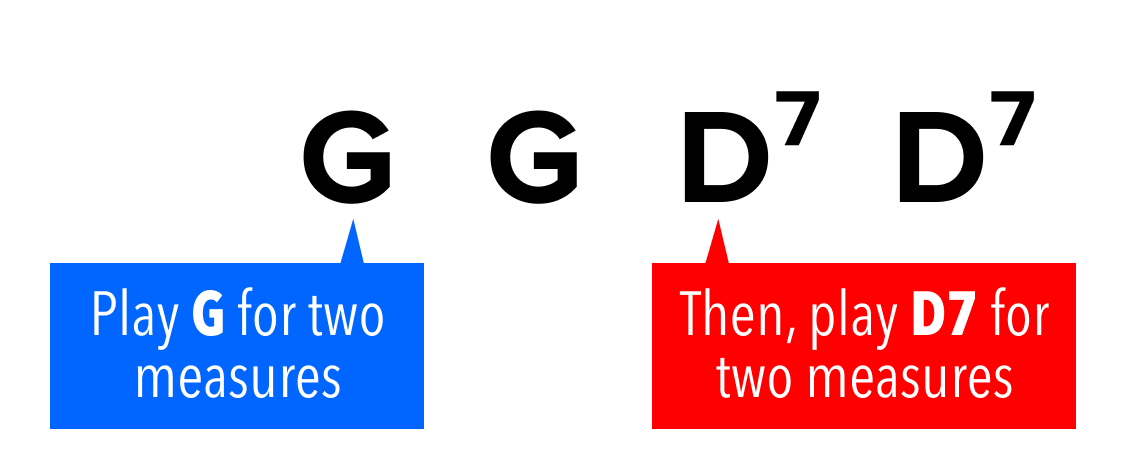
Quite often, chord progressions are repeated — exactly like strumming patterns. In these cases, once you reach the end of the progression you simply start again at the beginning:
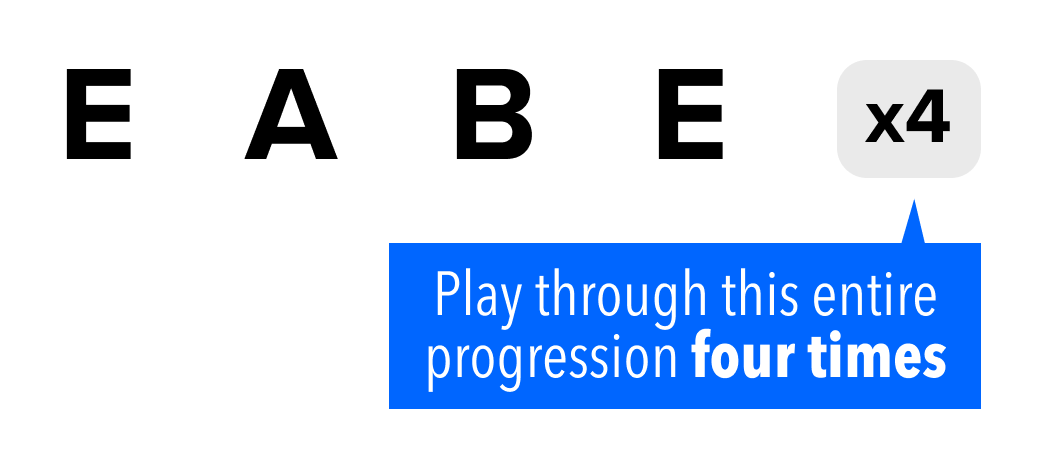
When I write up chord progressions, I’ll often show the number of beats in each measure. I do this so you know exactly how long to stay on each chord before switching.
Whether you’re playing slow or fast, remember to keep a steady tempo when counting!
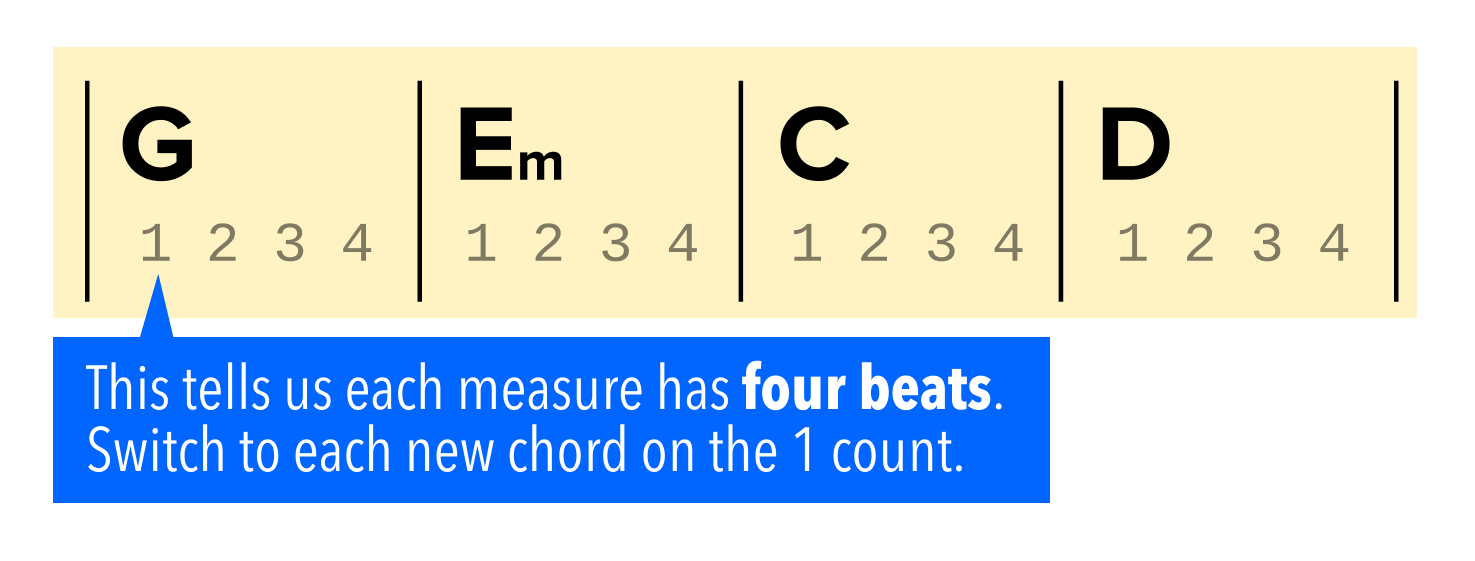
You may see chord progressions written out with numbers (e.g. Roman Numerals) instead of chord names. This is a way to convey chord changes with a bit more flexibility. See my Practical Music Theory lesson on Roman Numerals for a overview of this topic.
For example, suppose you’re playing a song that uses C-G-Am-F. But, let’s pretend you want to change the song’s key for some reason. Maybe you want to avoid the F chord, or want to play along with a friend whose harmonica is fixed in a specific key.
By referring to the table below, we can discern that this progression is using the chords I-V-vi-IV:
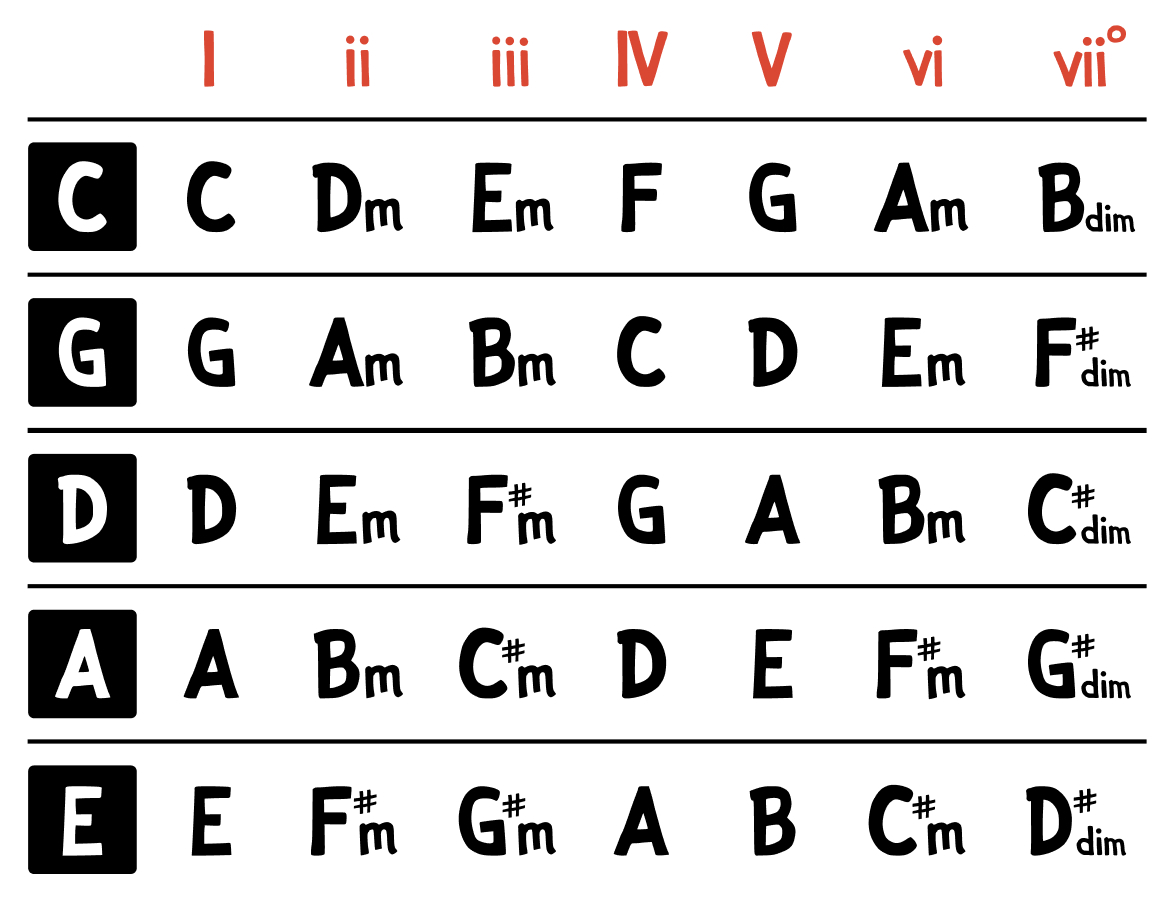
So we are starting with this:
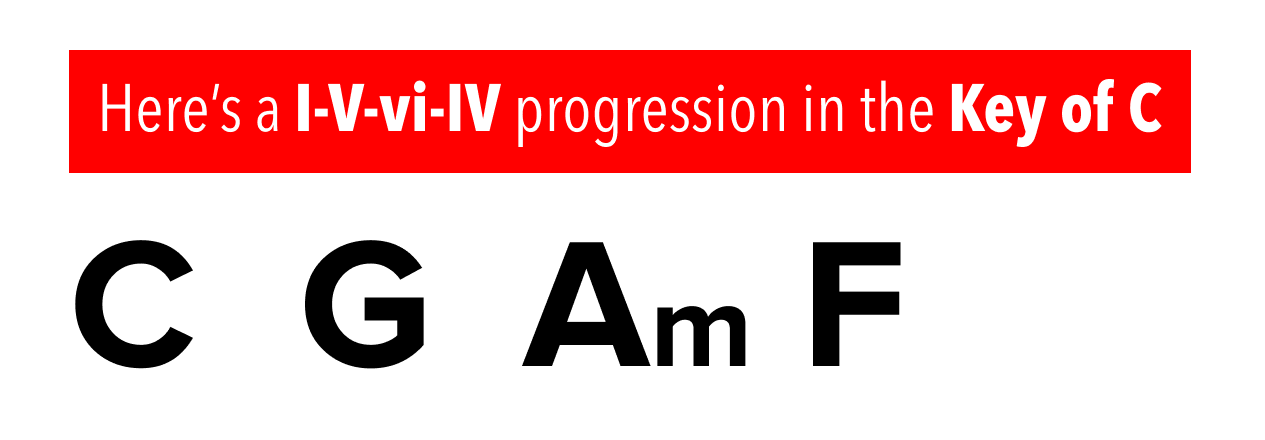
From here, we can use the table to play the same I-V-vi-IV progression in some other key - and the “feel” of the progression will remain identical. For example:
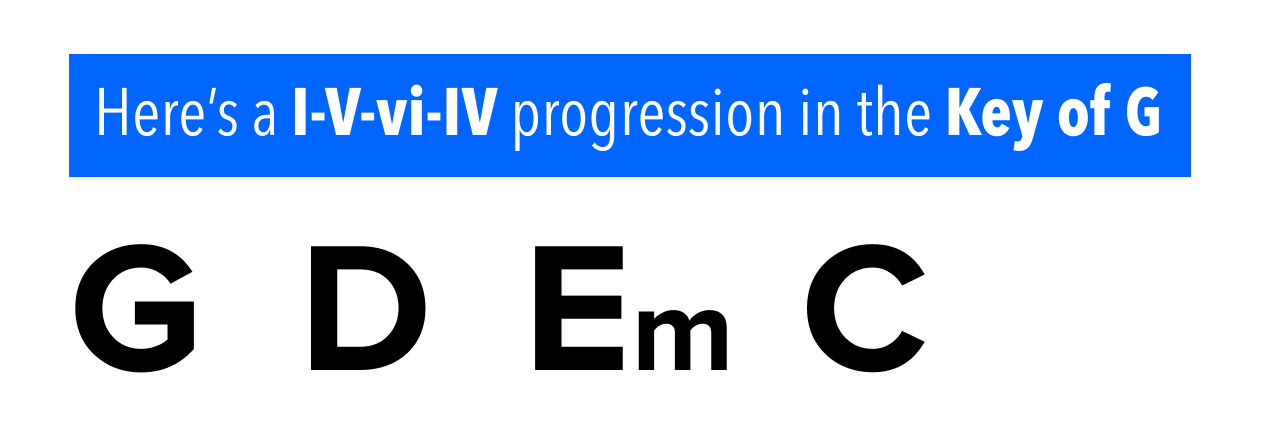
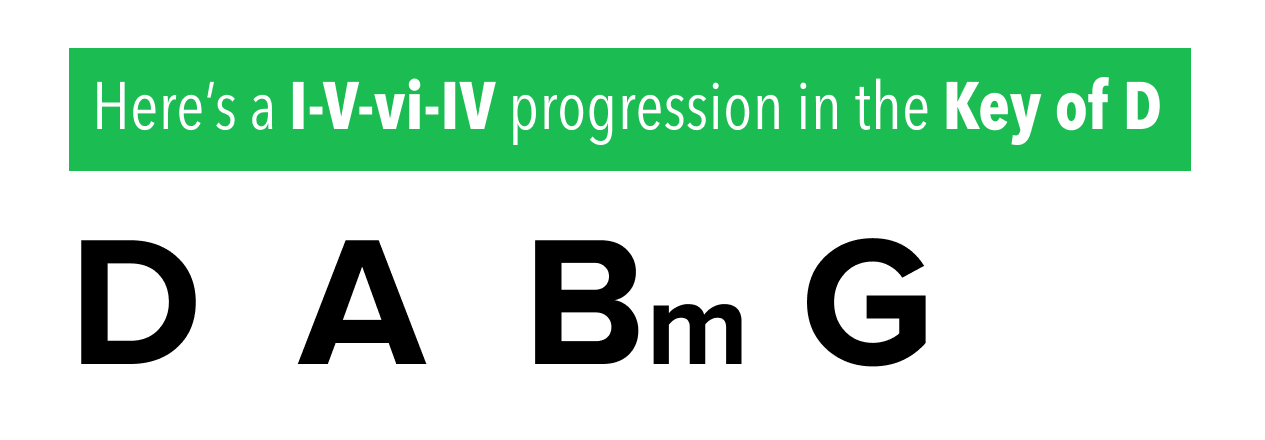
As you become more and more familiar with this topic, you may start to recognize the sound of certain chord progressions — even if you’re not sure of the key being used. This is good! You can simply use the numbered chords in any of the most common keys (e.g. in the table above) and play the corresponding chords.
Next Lesson: How to Read My Song Sheets →